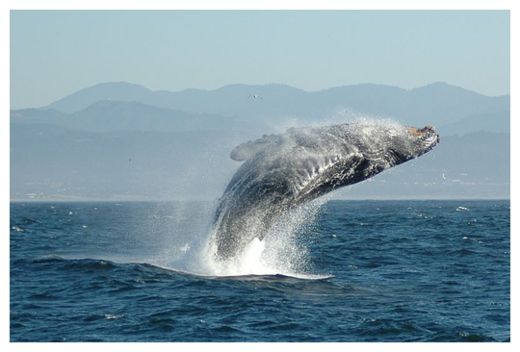
© Zorankovacevic / Wikipedia Commons
Just minutes outside of the New York Harbor, whales, dolphins and seals have been arriving in increasing numbers.
Prof. Christopher Clark, neurobiology and behavior and zoology, has monitored the animals since 1972 by placing acoustic recorders on Long Island and the mouth of New York Harbor and analyzing the data collected from them.
Although their presence has surprised many people, whales and other aquatic mammals have inhabited the area for many years, Clark said. He explained that scientists had not studied them consistently until recently.
"The whales are quite mobile and might go out from the continental shelf into the Gulf Stream, but there are enough of them moving around that there are always whales in New York," Clark said. "This is part of their home turf."
Clark estimates that as many as 30 to 50 fin whales are now living in the ocean offshore of New York City.
"Animals that evolved to live in a relatively quiet environment are now living in a really urbanized habitat," Clark said. "Whales have long life spans of 70 to 90 years. In their lifetime, New York has gone from being a fairly rural habitat with a few sailboats to a highly industrialized center of shipping traffic."
Because shipping traffic has increased oceanic noise by 1,000 fold, whales, which need long distances to communicate and navigate, have difficulty communicating with each other in New York's Harbor, according to Clark.
"The chronic degradation of sound compromises all of their basic life functions," Clark said.
At least six species of whales are listed as endangered by the New York State Department of Environmental Conservation. Environmental damage, pollution and accidental entanglements in nets have all threatened their populations, according to the Whale Center of New England. Ship strikes also threaten whales, according to Citizens Campaign for the Environment.
"Where else are [the whales] supposed to go?" Clark said.
By listening to the sounds of whales underwater over long periods of time, Clark hopes to understand what is and what is not happening off the oceans of New York, he said.
"It's amazing to me that 2007, [2008] or [2009] was the first time that anybody had really paid attention to listening to the ocean off of New York," Clark said.
Though the New York State Department of Environmental Conservation provided support for the whale study, the DEC faced budget issues and had to prematurely terminate funding. While Clark said he completed his work for the DEC and has since worked on a monitoring system of buoys in Boston that notifies boats to slow down in the presence of whales, he now plans to apply for outside funding to continue the study in New York.
"There's a whole cornucopia of sounds out there. There's a whole world out there full of song," Clark said. "It's sad because [the research methodology is] so inexpensive. It's so out there and so exciting, but it's a matter of trying to convince agencies to pay attention."

Reader Comments
to our Newsletter